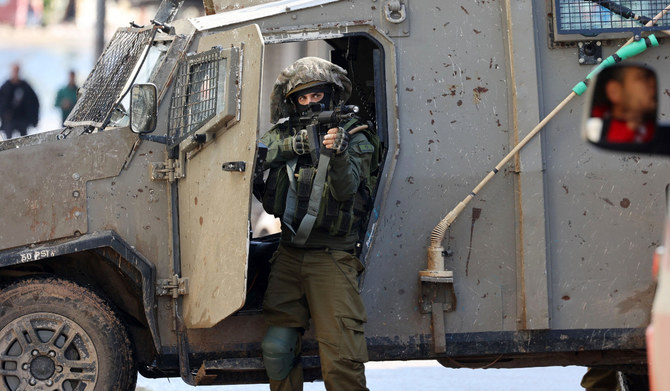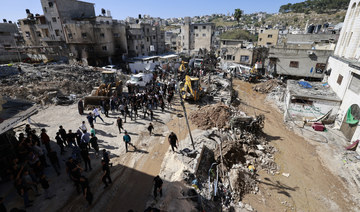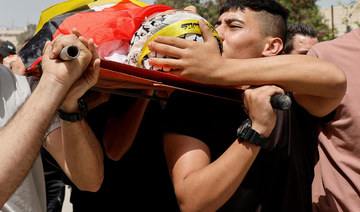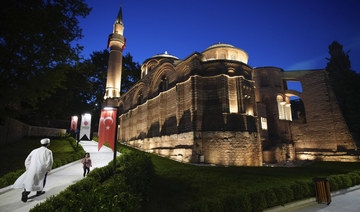JENIN: Israeli forces shot dead two Palestinian men at a military post near the city of Jenin in the occupied West Bank on Saturday, the army and Palestinian officials reported.
The incident occurred when several militants arrived in a vehicle and fired at soldiers stationed at the Salem military post at the entrance to Jenin, the army said in a statement.
“The soldiers, who were pre-positioned due to several similar past incidents, eliminated two terrorists,” the army said.
Palestinian authorities in Ramallah identified the two men killed at the military post as Mustafa Sultan Abed, 21, and Ahmed Muhammad Shawahna, 20.
The official Palestinian news agency Wafa said Israeli forces withheld their bodies after denying medics access to them, adding two other men had been hospitalized after being wounded.
Later on Saturday, residents of Sultan Abed’s village of Kfardan held a march paying tribute to him, an AFP correspondent reported.
The mourners included several gunmen who fired in the air.
“I am proud of my son’s martyrdom ... but the pain I feel in my heart as a father is impossible to comprehend or bear,” said Sultan Abed’s father.
Abu Nissan, a local commander of Al-Quds Brigade, the armed wing of Islamic Jihad, said the militants were not “shaken” by the killing.
“He is not the first martyr, nor he will be the last. We all are martyrs,” he said.
Israeli forces regularly carry out raids in and around Jenin and its adjacent refugee camp, a hub of militant groups.
The West Bank, which Israel has occupied since 1967, has seen a surge in violence for more than a year, particularly since the Israel-Hamas war erupted on Oct. 7.
At least 491 Palestinians have been killed by Israeli forces or settlers across the West Bank since Oct.7, according to Palestinian officials.
The Gaza Strip has been at war since militants carried out an unprecedented attack on southern Israel on Oct. 7.
Israel’s retaliatory offensive on the Gaza Strip has killed at least 34,388 Palestinians, most of them women and children, according to the territory’s Health Ministry.
Washington has been critical of Israeli policies in the West Bank, and US Secretary of State Antony Blinken, who is expected in Israel on Tuesday, recently determined an army unit committed rights abuses there before the war in Gaza.
But Blinken said in an undated letter to US House Speaker Mike Johnson that he was postponing a decision on blocking aid to the unit to give Israel more time to right the wrongdoing.
Blinken stressed in the letter that the overall American military support for Israel’s defense against Hamas and other threats would not be affected by the US State Department’s eventual decision on the unit.



























